Contemporary Issues and Emerging Trends | Environmental Law - CLAT PG PDF Download
Introduction
The Contemporary Issues and Emerging Trends section in Environmental Law for the CLAT PG exam focuses on the latest developments in environmental protection, climate change, and sustainability. This section tests your understanding of new legal frameworks, policies, and challenges arising from global and national environmental concerns. Topics like climate litigation, corporate sustainability, green technology, and international climate agreements are crucial because they reflect how laws are evolving to address modern problems such as pollution, biodiversity loss, and climate-induced disasters. The CLAT PG exam often includes passage-based questions, requiring you to analyze recent cases, policies, or global trends and apply legal principles. These notes cover all key areas in simple, complete sentences to help you prepare effectively and score well in the exam.
Climate Litigation
- Climate litigation involves filing lawsuits against governments, corporations, or institutions for failing to take adequate action to combat climate change or for causing environmental harm through their activities.
- These lawsuits aim to enforce climate commitments, hold polluters accountable, and push for stronger environmental policies.
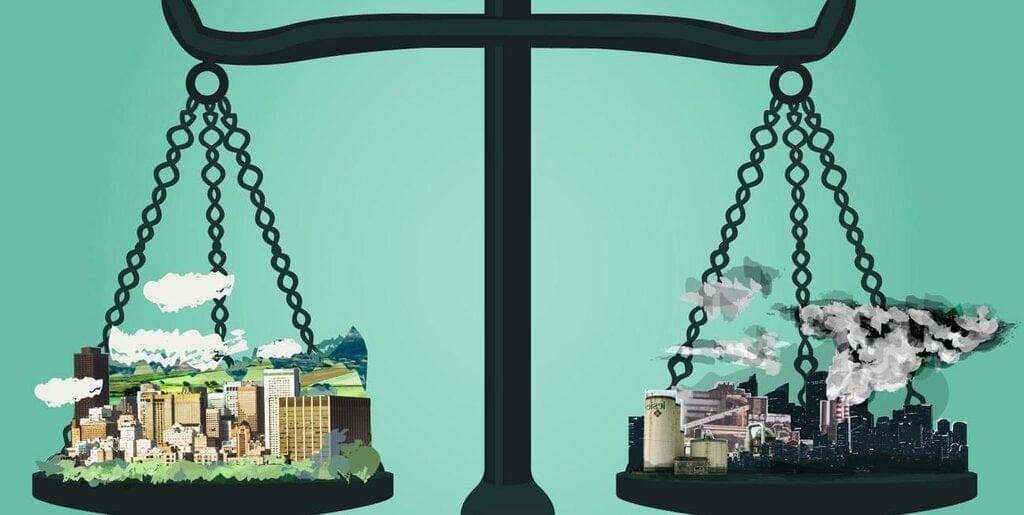
Global Examples:
1. Urgenda Foundation v. State of Netherlands (2015):
- A Dutch court ruled that the government must reduce greenhouse gas emissions by 25% by 2020 to protect citizens from climate change.
- This case set a global precedent for using courts to enforce climate action.
2. Juliana v. United States (2015):
- A group of young people sued the U.S. government, arguing that its inaction on climate change violates their constitutional rights to a safe and healthy environment.
- The case highlights the role of youth in climate litigation.
Indian Context
- In India, the National Green Tribunal (NGT) is a key body handling climate-related disputes, addressing issues like air pollution, deforestation, and renewable energy adoption.
- Examples of NGT actions:
- Banned old diesel vehicles in Delhi to reduce air pollution and protect public health.
- Ordered states to stop illegal mining activities that destroy forests and rivers, contributing to climate change.
- Public Interest Litigations (PILs) filed in the Supreme Court and High Courts also address climate issues, such as Delhi’s air quality crisis and industrial pollution.
Corporate Sustainability and ESG Frameworks
- Corporate sustainability means businesses adopt practices that minimize environmental harm, promote social welfare, and follow ethical governance.
- Environmental, Social, and Governance (ESG) frameworks guide companies to achieve these goals by focusing on reducing emissions, ensuring fair labor practices, and maintaining transparency.
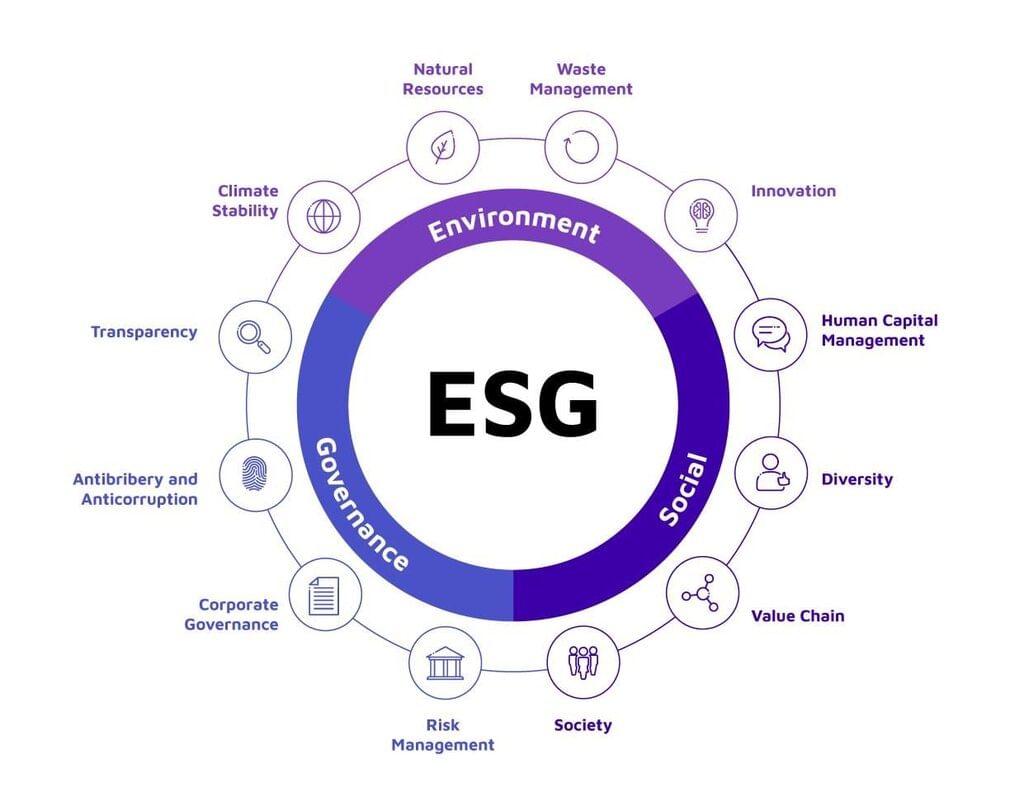
Legal Framework in India:
1. Companies Act, 2013:
- Requires large companies to spend a portion of their profits on Corporate Social Responsibility (CSR) projects, such as afforestation, clean energy initiatives, or water conservation.
- Mandates sustainability reporting, where companies disclose their environmental and social impacts.
2. SEBI Guidelines:
- The Securities and Exchange Board of India introduced Business Responsibility and Sustainability Reporting (BRSR) for listed companies.
- BRSR requires companies to report their carbon emissions, waste management practices, and efforts to promote sustainability.
Emerging Trends:
- Green Financing: Banks and investors are funding eco-friendly projects, such as solar power plants, wind farms, and green buildings, to support a low-carbon economy.
- Corporate Accountability: Companies face growing pressure from regulators, investors, and consumers to reduce carbon emissions and adopt clean technologies to meet global sustainability standards.
- Examples: Indian companies like Tata Group and Reliance Industries are setting net-zero emission targets and integrating ESG principles into their operations.
Climate Justice
- Climate justice ensures that climate change policies protect vulnerable and marginalized communities, such as indigenous groups, coastal populations, and low-income groups, who face the worst impacts of climate change despite contributing the least to it.
- It focuses on fairness, ensuring these communities have access to resources and protection.
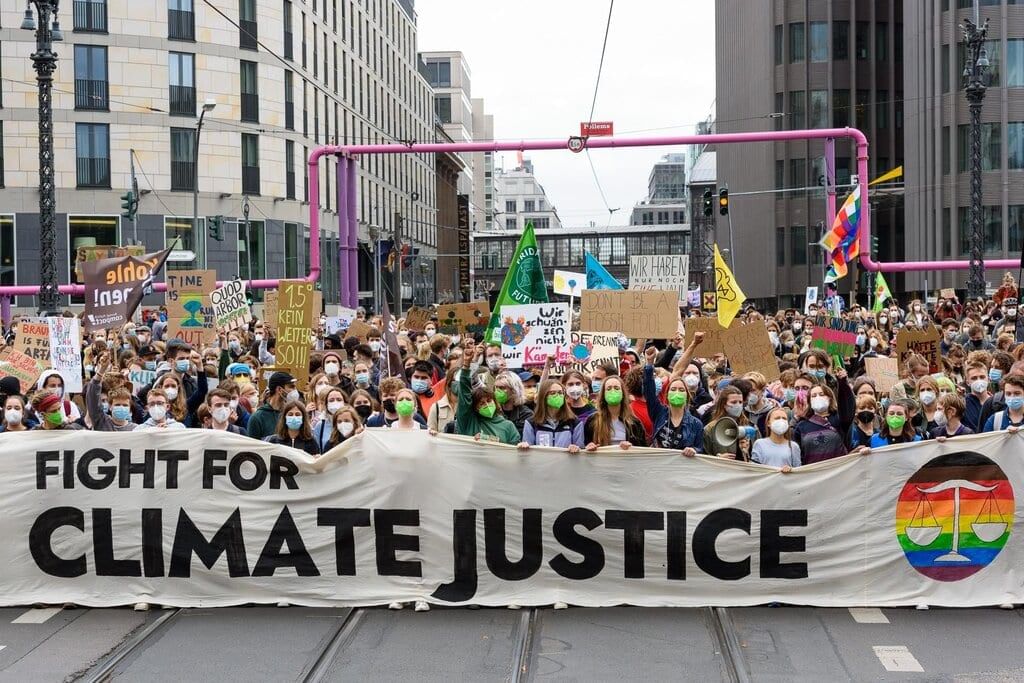
Key Issues:
- Displacement: Climate-induced disasters like floods, sea-level rise, and droughts force communities to relocate, often leaving them without homes or livelihoods.
- Equitable Access: Marginalized groups need fair access to climate finance, clean energy, and adaptation resources to cope with climate impacts.
- Example: Tribal communities in Odisha lose their land and forests due to mining projects, which also contribute to climate change.
Indian Context:
1. Scheduled Tribes and Other Traditional Forest Dwellers (Recognition of Forest Rights) Act, 2006:
- Grants forest-dwelling communities rights over forest land and resources, protecting them from displacement caused by climate-related projects like dams or mining.
- Ensures communities can sustainably manage forests, which helps combat climate change.
2. NGT Orders:
- The NGT ensures fair compensation and rehabilitation for communities affected by industrial or developmental projects that harm the environment.
- Example: NGT ordered compensation for villagers displaced by a dam project in Maharashtra.
Carbon Markets and Green Economy
- A carbon market is a system where companies buy and sell carbon credits to offset their greenhouse gas emissions.
- It encourages businesses to reduce pollution and invest in green projects, such as renewable energy or afforestation, to earn credits.
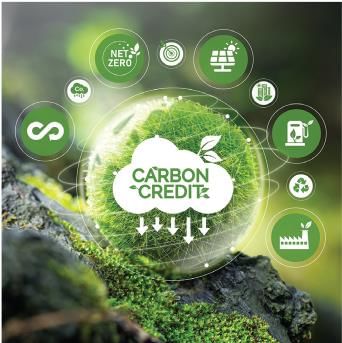
Indian Initiatives
Energy Conservation (Amendment) Act, 2022:
- Provides a legal framework for establishing a domestic carbon market in India.
- Aims to promote emission reductions and support India’s net-zero target by 2070.
Perform, Achieve, and Trade (PAT) Scheme:
- Encourages industries to improve energy efficiency.
- Companies that save energy earn credits, which they can sell to less efficient companies.
- Example: A solar power plant in Rajasthan earns carbon credits, which it sells to a coal-based factory.
Global Trends:
EU Emissions Trading System (ETS):
- A leading carbon market where companies trade emission allowances to meet strict reduction targets.
- It serves as a model for other countries.
Carbon Offset Projects:
- Projects like tree planting, wind farms, or methane capture generate credits that companies use to offset their emissions.
Climate Adaptation and Resilience
- Adaptation involves preparing for and reducing the impacts of climate change, such as floods, droughts, heatwaves, or sea-level rise, to protect communities and ecosystems.
- Resilience means building systems, like cities, farms, or infrastructure, that can withstand climate challenges without collapsing.
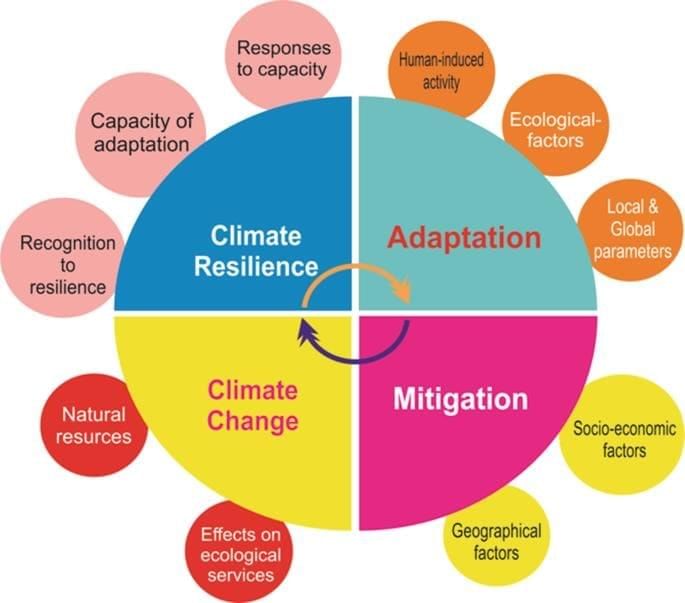
Key Laws and Policies:
Disaster Management Act, 2005:
- Provides a framework for preparing for and responding to climate-related disasters, such as cyclones, floods, or heatwaves.
- Establishes disaster management authorities at national and state levels.
National Adaptation Fund for Climate Change (NAFCC):
- Funds projects to help communities adapt to climate change, such as drought-resistant farming, flood-resistant homes, or water conservation programs.
Indian Examples:
Coastal Regulation Zone (CRZ) Rules:
- Regulate construction and industrial activities in coastal areas to protect against sea-level rise, erosion, and storms.
- Example: CRZ rules limit building near the coast in Mumbai to prevent flood damage.
Urban Planning Initiatives:
- Cities like Ahmedabad have Heat Action Plans, which include cooling centers, public awareness campaigns, and tree planting to combat heatwaves.
Green Technology and Innovation
- Green technology includes clean energy solutions like solar power, wind energy, green hydrogen, and electric vehicles (EVs) that reduce pollution and help combat climate change.
- Laws and policies support these technologies to promote a low-carbon economy.
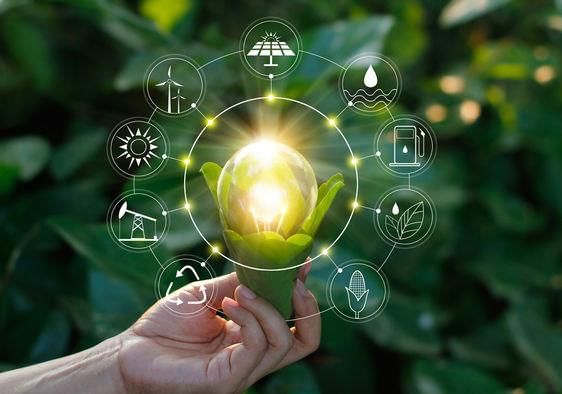
Indian Policies:
National Green Hydrogen Mission (2023):
- Aims to make India a global leader in producing green hydrogen, a clean fuel made using renewable energy like solar or wind.
- Supports industries like transport and manufacturing to switch to green hydrogen.
FAME India Scheme (Faster Adoption and Manufacturing of Electric Vehicles):
- Provides subsidies for electric vehicles and charging infrastructure to promote clean transportation.
- Aims to make 30% of India’s vehicles electric by 2030.
Legal Framework:
Electricity Act, 2003:
- Encourages the development of renewable energy sources like wind and solar through incentives, subsidies, and regulations.
- Supports grid integration of renewable energy.
Bureau of Energy Efficiency (BEE):
- Sets energy efficiency standards for appliances, such as star-rated air conditioners, refrigerators, and fans, to reduce energy consumption.
Examples:
- India has installed large solar parks in states like Rajasthan and Gujarat to meet its renewable energy targets.
- Electric vehicle adoption is growing, with companies like Tata Motors launching affordable EVs.
Biodiversity and Ecosystem Protection
- Biodiversity protection involves conserving plants, animals, and ecosystems threatened by climate change, deforestation, pollution, and habitat loss.
- Healthy ecosystems, like forests and wetlands, store carbon and support climate resilience.
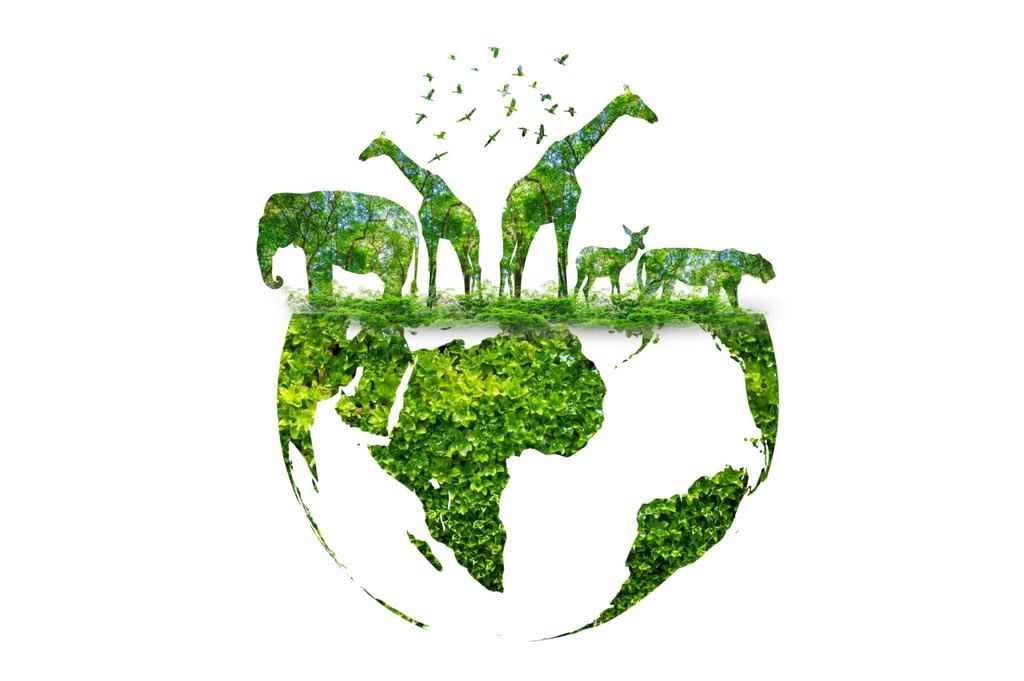
Key Laws:
Biological Diversity Act, 2002:
- Regulates access to biological resources, such as medicinal plants or seeds, to prevent exploitation.
- Promotes sustainable use and equitable sharing of benefits with local communities.
Wildlife Protection Act, 1972:
- Protects endangered species by banning hunting and regulating trade in wildlife products.
- Establishes national parks, wildlife sanctuaries, and tiger reserves.
Recent Developments:
India’s Updated Nationally Determined Contributions (NDCs, 2022):
- Commit to creating carbon sinks through afforestation and protecting biodiversity to absorb greenhouse gases.
- Aim to restore degraded ecosystems, like forests and grasslands.
Ramsar Convention:
- India has designated wetlands, such as the Sundarbans, Chilika Lake, and Keoladeo National Park, as protected sites to conserve biodiversity and store carbon.
Examples:
- Conservation efforts in the Western Ghats protect endangered species and prevent floods by maintaining forest cover.
- The Sundarbans mangrove forests act as a natural barrier against cyclones and store carbon.
Plastic Pollution and Waste Management
- Plastic pollution harms ecosystems, wildlife, and human health by clogging rivers, oceans, and landfills.
- Waste management laws aim to reduce plastic waste, promote recycling, and encourage a circular economy where materials are reused instead of discarded.
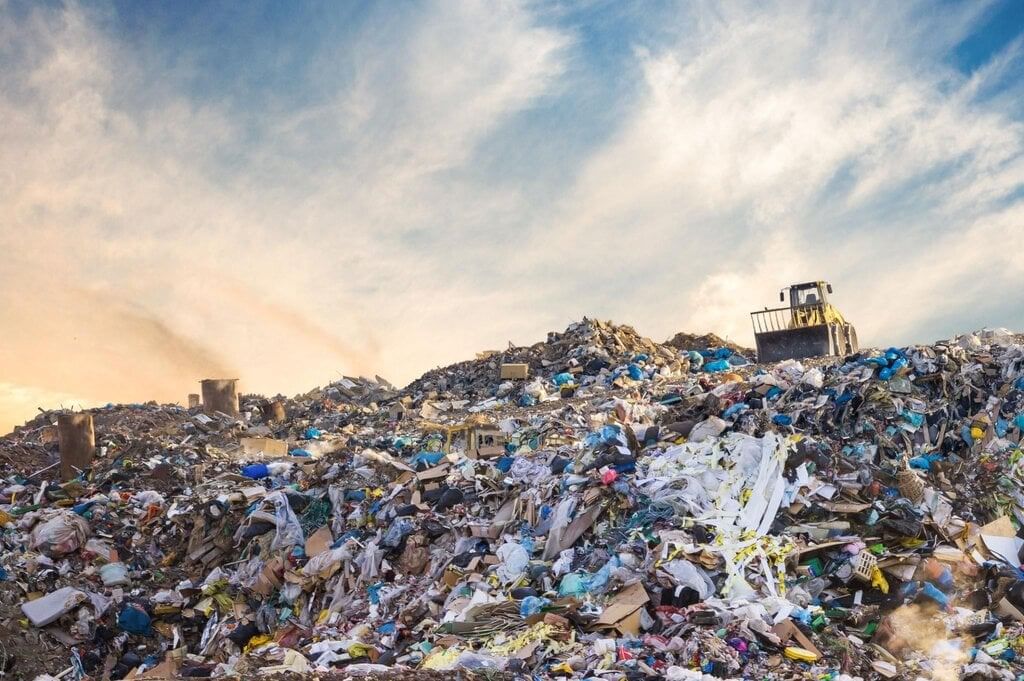
Key Regulations:
Plastic Waste Management Rules, 2016:
- Ban single-use plastics, such as straws, plastic bags, and cutlery, to reduce waste.
- Implement Extended Producer Responsibility (EPR), requiring companies to collect and recycle plastic waste generated by their products.
- Example: A beverage company must recycle plastic bottles it produces.
Municipal Solid Waste Management Rules, 2016:
- Mandate waste segregation, recycling, and proper disposal in cities to prevent landfill overuse.
Emerging Trends:
Biodegradable Plastics:
- Innovations in plastics that decompose naturally are reducing environmental harm.
- Example: Some Indian startups produce biodegradable packaging for food products.
NGT Orders:
- The NGT has directed cities to segregate waste, manage landfills properly, and prevent illegal dumping in rivers or forests.
- Example: NGT fined a municipality for failing to manage plastic waste in a river.
Examples:
India’s nationwide ban on single-use plastics has led to the adoption of cloth bags, paper straws, and biodegradable alternatives in shops and markets.
Cities like Bengaluru have introduced waste segregation programs to recycle plastic and organic waste.
Urbanization and Sustainable Development
- As cities grow due to population and economic demands, laws and policies ensure urban development is sustainable, with eco-friendly infrastructure, clean transport, and protection of natural areas like forests and wetlands.
- Sustainable cities reduce pollution, conserve resources, and improve quality of life.
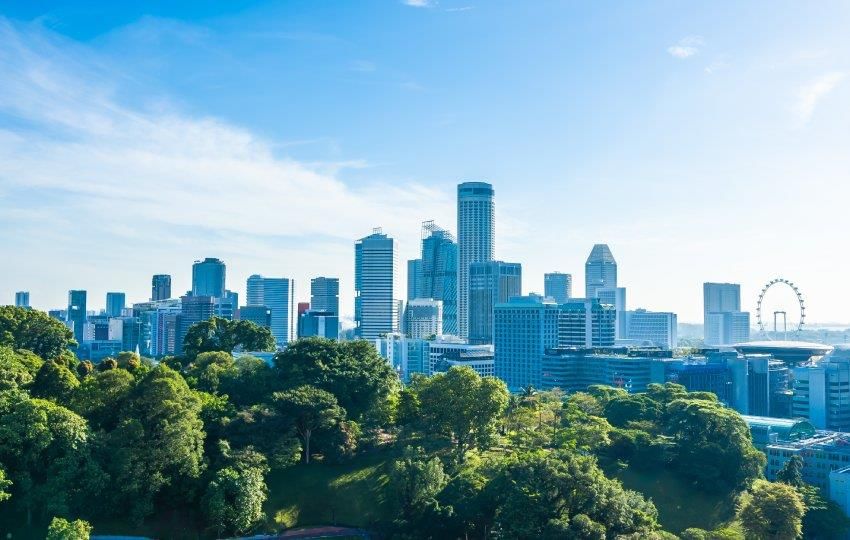
Key Policies:
Smart Cities Mission:
- A government initiative to develop 100 cities with eco-friendly features, such as solar energy, efficient waste management, smart public transport, and green spaces.
- Example: Pune’s smart city project includes solar-powered streetlights and waste recycling plants.
National Mission on Sustainable Habitat:
- Part of the National Action Plan on Climate Change (NAPCC), promotes energy-efficient buildings, sustainable urban planning, and low-carbon transport systems.
Legal Issues:
Coastal Regulation Zone (CRZ) Rules:
- Restrict construction and industrial activities in coastal areas to protect against sea-level rise, erosion, and storms.
- Example: CRZ rules prevent hotels from being built too close to the coast in Goa.
NGT Orders:
- The NGT has stopped illegal construction in eco-sensitive zones, such as hills, wetlands, or forests, to protect ecosystems.
- Example: NGT halted a real estate project in Bengaluru for encroaching on a lake.
Examples:
- Delhi’s metro system reduces car use and air pollution, supporting sustainable urban mobility.
- Mumbai enforces CRZ rules to protect its coastline from overdevelopment and climate risks.
International Developments and India’s Role
- Global climate agreements, negotiations, and initiatives shape India’s environmental laws and policies.
- India plays a leadership role in international climate action, advocating for developing countries and promoting clean energy.
Key Events:
COP28 (2023):
- Held in Dubai, focused on scaling up renewable energy, improving climate finance, and accelerating emission reductions.
- Introduced commitments to triple global renewable energy capacity by 2030.
COP29 (2024):
- Held in Baku, Azerbaijan, emphasized the Loss and Damage Fund, stricter emission targets, and accountability for climate finance.
- Discussed challenges in meeting the Paris Agreement’s 1.5°C goal.
International Solar Alliance (ISA):
- A global initiative led by India and France to promote solar energy adoption in developing countries.
- Supports solar projects and technology sharing.
Emerging Issues:
Loss and Damage Fund:
- Established at COP27 (2022) to provide financial aid to countries facing climate disasters, such as floods, cyclones, or droughts.
- Developing countries, including India, advocate for fair funding from developed nations.
Climate Finance:
- Developed countries are expected to provide $100 billion annually to support climate action in developing nations, including funds for clean energy and adaptation projects.
India’s Commitments:
Net-Zero Emissions by 2070:
- India aims to balance its greenhouse gas emissions with carbon removal through forests, renewable energy, and technologies like carbon capture.
500 Gigawatts of Renewable Energy by 2030:
- India plans to install 500 GW of renewable energy capacity, focusing on solar, wind, and hydropower, to reduce reliance on coal.
Updated NDCs (2022):
- Commit to reducing emissions intensity by 45% by 2030 and achieving 50% non-fossil fuel energy capacity.
Examples:
India’s leadership in the ISA has led to solar projects in Africa and Asia.
The country is expanding solar parks, like the Bhadla Solar Park in Rajasthan, to meet its renewable energy goals.
Environmental Impact Assessment (EIA) Controversies
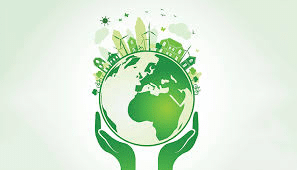
- Environmental Impact Assessment (EIA) is a process to evaluate the potential environmental harm of projects, such as dams, highways, factories, or mines, before they are approved.
- It ensures projects are sustainable and do not harm ecosystems or communities.
Key Issue:
Draft EIA Notification, 2020:
- Proposed changes to the EIA process under the Environment (Protection) Act, 1986 sparked controversy.
- Criticisms include:
- Reducing public consultation periods, limiting the ability of communities to raise concerns about projects.
- Exempting certain projects, such as small mines, linear projects (e.g., highways), or strategic projects, from EIA requirements.
- Allowing post-facto clearance, where projects that started illegally can get approval later.
- Environmentalists and activists argued that these changes weaken environmental protection and favor industries over ecosystems.
Judicial Interventions:
- The National Green Tribunal (NGT) and Supreme Court have intervened to ensure proper EIA enforcement.
- Examples:
- The Supreme Court halted a highway project in Goa that threatened a forest due to an inadequate EIA.
- The NGT stopped a mining project in Chhattisgarh for violating EIA rules and harming local communities.
- Courts have emphasized the importance of public participation and thorough environmental assessments.
Emerging Technologies and Environmental Law

Emerging technologies, such as geoengineering, carbon capture and storage (CCS), and green hydrogen, aim to mitigate climate change by reducing emissions or altering environmental processes.
These technologies raise legal, ethical, and regulatory challenges due to their potential risks and benefits.
Global Trends:
Solar Geoengineering:
- Involves techniques like spraying reflective particles into the atmosphere to block sunlight and cool the planet.
- Legal Issues: There are no global regulations, and it may cause unintended harm, such as disrupting rainfall patterns or affecting agriculture in some regions.
- Ethical Concerns: Questions about who controls the technology and its global impact.
Carbon Capture and Storage (CCS):
- Captures carbon dioxide (CO2) from industrial sources, like power plants, and stores it underground to prevent it from entering the atmosphere.
- Legal Issues: Regulations are needed for safe storage, monitoring, and liability if CO2 leaks occur.
- Example: CCS is used in countries like Norway and Canada to reduce industrial emissions.
Indian Context:
Carbon Capture and Storage (CCS):
- India is piloting CCS projects in power plants and industries, supported by the government and companies like ONGC.
- Example: A coal-based power plant in Tamil Nadu is testing CCS to capture emissions.
Green Hydrogen:
- The National Green Hydrogen Mission (2023) promotes green hydrogen as a clean fuel for industries, transport, and power generation.
- Legal frameworks are being developed to regulate production, storage, and distribution.
- Example: Green hydrogen plants are being set up in Gujarat to supply clean fuel to refineries.
Examples:
- ONGC is exploring CCS to reduce emissions from its oil and gas operations.
- Reliance Industries is investing in green hydrogen projects to support India’s clean energy goals.
Conclusion
The evolving landscape of environmental law reflects increasing awareness and action towards climate change and sustainability. Key areas such as climate litigation, corporate sustainability, and green technology are becoming vital in addressing environmental challenges. India’s commitment to renewable energy and legal frameworks enhances its role in global climate initiatives. As laws adapt to emerging trends, they aim to protect ecosystems and vulnerable communities, ensuring a balanced approach to development and environmental preservation.
|
39 docs|15 tests
|
FAQs on Contemporary Issues and Emerging Trends - Environmental Law - CLAT PG
| 1. What is climate litigation and why is it important? |  |
| 2. How do corporate sustainability and ESG frameworks contribute to climate action? |  |
| 3. What is climate justice and why does it matter? |  |
| 4. How do carbon markets function and what is their role in promoting a green economy? |  |
| 5. What are some key strategies for climate adaptation and resilience in urban areas? |  |
















